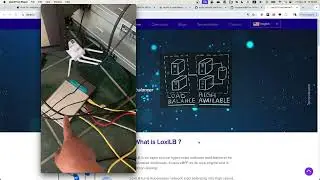Allele-specific methylation in human brains
Wouter De Coster (VIB, UAntwerp Center for Molecular Neurology) opened his talk with a quote from Sydney Brenner, ‘one of the heroes of molecular genetics’: ‘Progress in science depends on new techniques, new discoveries and new ideas, probably in that order’. Wouter described that his work focuses on developing new methods and techniques, and ‘nanopore sequencing is a great fit for that’.
Specifically, Wouter studies frontotemporal dementia (FTD) – a subtype of dementia characterised by language or behavioural impairments, and a relatively early typical onset at after 65 years of age. The most common genetic association with this disease is a GGGGCC repeat expansion in the C9orf72 gene. Wouter commented that this expansion is ‘so hard to detect with other technologies’; however, they are able to successfully analyse it using nanopore technology. With nanopore reads they have also identified a large insertion in the DPP6 gene, as well as a VNTR expansion associated with Alzheimer’s disease. These examples show how ‘nanopore has a lot to offer’ in understanding neurodegenerative diseases.
Whole genome structural variation and modification detection in FTD
The project central to his talk was a large-scale PromethION whole-genome sequencing project in 150 frontotemporal dementia (FTD) patients and 50 controls (of which he has sequenced 40% of samples so far). In these genomes, he has been investigating structural variation, focusing on loci that are too repetitive for accurate short-read sequencing-based analyses, and nucleotide modifications.
Wouter explained how his team optimised fragmentation to produce the best metrics for SV detection, by determining the sweet spot between read length and sequencing yield. With an awareness of this prior analysis, their approach identified a vast number of SVs of different classes and different lengths, and with long nanopore reads, they could phase them into parental haplotypes.
Focusing on nucleotide modifications, he explained that most modifications are found within a CpG context, as 5-methylcystosine (5mC). A benefit of nanopore technology is that modifications can be detected alongside nucleotide sequence when unamplified DNA is analysed. Wouter’s ‘recipe’ for identifying haplotype-specific methylation involves: firstly phasing reads into haplotypes (using Longshot); identifying methylation per CpG per locus (Nanopolish); counting methylated and unmethylated CpGs per locus (methplotlib); and lastly testing for a difference in methylation frequency (methplotlib). Wouter’s methplotlib software can be found on GitHub: github.com/wdecoster/methplotlib.
Displaying a principal component analysis of his overall methylation results, Wouter stated that there wasn’t an obvious, extreme difference between patient subtypes and controls. He explained that smaller, more discreet differences at specific loci would be expected, and methylation changes may also be secondary to the neurodegeneration (e.g. due to immune cell infiltration) as opposed to a primary cause.
Wouter drew our attention to an example locus, the GNAS complex locus, where parental imprinting could be detected using his analysis pipeline involving phasing and methylation calling. Differential methylation could be seen over the distance of several hundred kilobases, across two genes, one on the sense strand and the other the antisense strand. In one haplotype the sense gene was active, whilst on the other haplotype the antisense gene was active (i.e. hypomethylated). Parental imprinting was known to feature at this locus, but ‘you could only see this [high resolution] with nanopore sequencing’. Short-read bisulphite sequencing could reveal methylation differences at the loci, but the mutual exclusivity of methylation could only be revealed with nanopore sequencing.







